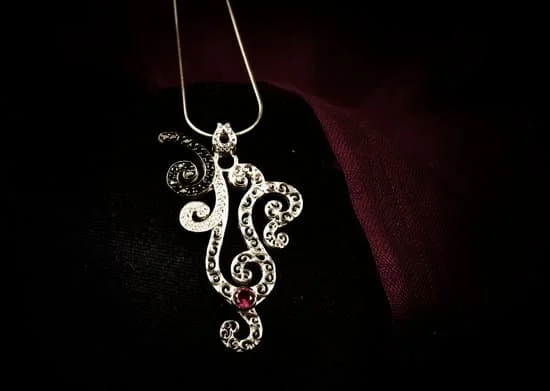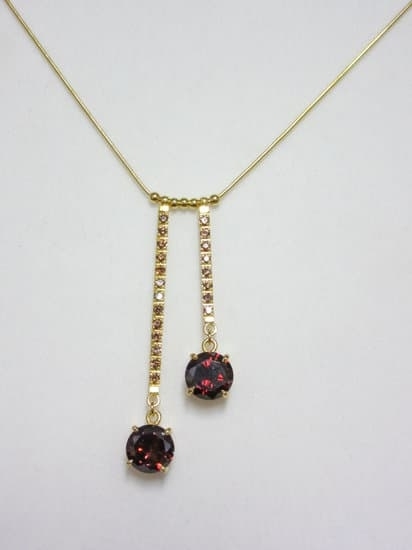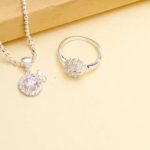The history of jewelry spans centuries and across civilizations, showcasing the evolution of human creativity and craftsmanship. From ancient adornments to modern statement pieces, jewelry has played a significant role in cultures worldwide. In this article, we will explore how jewelry has evolved through the ages, from its origins in ancient civilizations to the contemporary trends and innovations shaping the future of jewelry making.
Ancient civilizations like Egypt and Mesopotamia were among the first to create intricate jewelry using precious metals, gemstones, and intricate designs. The symbolism and cultural significance attached to these early adornments reveal a fascinating story of human expression and artistry.
As we continue our journey through history, we’ll delve into the Renaissance era, where exquisite jewelry designs became emblematic of wealth and status. The Victorian era followed with its emphasis on sentimental and symbolic jewelry, reflecting societal values and personal connections. The article will also highlight the whimsical nature-inspired designs of Art Nouveau jewelry, as well as the rise of costume jewelry during the Roaring Twenties.
Join us as we explore the enduring beauty and significance of jewelry throughout history, understanding how it continues to captivate us with its timeless appeal and innovative craftsmanship. From traditional techniques to cutting-edge technologies, the world of jewelry remains an ever-changing landscape that reflects our cultural heritage while embracing modern trends.
Ancient Jewelry
Ancient Egyptian Jewelry
Ancient Egypt is renowned for its exquisite gold jewelry, often adorned with precious gemstones such as turquoise, lapis lazuli, and carnelian. The craftsmanship and attention to detail in ancient Egyptian jewelry reflect the importance placed on personal adornment and status within society. From intricate amulets and pendants to elaborate collar necklaces and ornate bracelets, ancient Egyptian jewelry showcased both artistic creativity and symbolic significance.
Mesopotamian Jewelry
Mesopotamian civilization also made significant contributions to the history of jewelry. Their designs were characterized by the use of materials such as gold, silver, and semiprecious stones like agate and jasper. Beads played a prominent role in Mesopotamian jewelry, with artisans creating colorful beaded necklaces, earrings, and bracelets that displayed their skill in craftsmanship. These pieces not only served as personal adornments but also held cultural and religious significance within Mesopotamian society.
As we look back on ancient jewelry from civilizations like Ancient Egypt and Mesopotamia, we can see how these early creations laid the foundation for the rich tapestry of designs and techniques that continue to influence contemporary jewelry-making today. The artistry, symbolism, and craftsmanship evident in ancient jewelry serve as a testament to its enduring significance throughout history.
The Renaissance and Jewelry
The Renaissance period marked a significant shift in the world of jewelry, as artists and craftsmen began to create pieces that were not only beautiful but also highly detailed and intricate. During this era, jewelry became a symbol of wealth, power, and social status, with royalty and nobility commissioning elaborate pieces to showcase their prestige. The jewelry of the Renaissance was characterized by its exquisite designs and craftsmanship, setting the stage for future eras of jewelry making.
The Influence of Art and Culture
One of the defining characteristics of Renaissance jewelry was its close association with art and culture. Artists such as Leonardo da Vinci and Michelangelo played a significant role in shaping the designs of jewelry during this period, infusing their works with elements of classicism and humanism. Additionally, the discovery of ancient Roman and Greek artifacts led to a revival of classical motifs in jewelry design, resulting in pieces that were rich in symbolism and meaning.
Materials and Techniques
The Renaissance saw a resurgence in the use of precious metals such as gold and silver, as well as an increased emphasis on gemstones such as diamonds, pearls, and rubies. Jewelry makers began to employ new techniques such as enameling, filigree work, and gemstone cutting to create pieces that were more elaborate than ever before. These advancements in materials and techniques allowed for the creation of jewelry that reflected the opulence and grandeur of the era.
The Legacy of Renaissance Jewelry
The influence of Renaissance jewelry can still be seen today in the intricate designs and attention to detail that continue to define fine jewelry. The era set a new standard for craftsmanship and creativity in jewelry making, inspiring generations of artisans to push the boundaries of design. The legacy of Renaissance jewelry lives on not only in museums and historical collections but also in contemporary pieces that pay homage to the exquisite designs of this era.
The Victorian Era
During the Victorian era, jewelry took on a new level of symbolism and sentimentality. This was a time when jewelry was used to convey specific messages and emotions, often through the use of certain gemstones, motifs, and materials. Let’s take a closer look at how this era played a significant role in the history of jewelry.
- Sentimental Jewelry: During the Victorian era, sentimental jewelry became incredibly popular. Pieces such as lockets, mourning rings, and charm bracelets were widely worn as a way to commemorate loved ones who had passed away or to express affection for family members. These pieces often featured intricate engravings or contained small compartments for holding locks of hair or miniature portraits.
- Symbolic Motifs: The Victorian era also saw the use of symbolic motifs in jewelry. For example, acorns symbolized strength and potential, while hearts represented love and devotion. Additionally, snakes were commonly used to symbolize eternity and wisdom. These motifs were incorporated into various types of jewelry, including brooches, pendants, and rings.
- Innovation in Design: The Victorian era was characterized by innovation in jewelry design. With advances in technology and techniques such as filigree work and enamel detailing, jewelers were able to create intricate pieces that showcased their craftsmanship. The use of mixed metals such as gold and silver also became popular during this time, adding further depth and dimension to Victorian-era jewelry designs.
The Victorian era marked a significant period in the history of jewelry, with its emphasis on symbolism and sentimentality shaping the way we perceive and appreciate jewelry today. This era’s influence can still be seen in contemporary designs that incorporate meaningful motifs and sentimental elements.
Art Nouveau Jewelry
During the late 19th century and early 20th century, the Art Nouveau movement brought a fresh and innovative approach to jewelry design. This period was marked by a shift away from the traditional styles of jewelry making, as artisans drew inspiration from nature and incorporated whimsical, flowing forms into their designs. The hallmark of Art Nouveau jewelry was its emphasis on organic motifs such as flowers, insects, and other natural elements.
Key characteristics of Art Nouveau jewelry:
- Organic motifs: Jewelry makers during this period took inspiration from the natural world, incorporating flowing lines and asymmetrical shapes into their designs.
- Whimsical aesthetics: Art Nouveau jewelry often featured fantastical creatures, ethereal female figures, and dreamlike landscapes, capturing the essence of mysticism and fantasy in their pieces.
- Innovative techniques: Artists utilized new materials and techniques such as enamel work, plique-a-jour (a type of enameling), and innovative stone settings to create intricate and unique pieces.
This era marked a departure from the rigid constraints of Victorian-era jewelry, embracing a more romantic and ethereal aesthetic. The demand for distinctive pieces that celebrated individuality led to an explosion of creativity in jewelry design during this time period.
As a result, Art Nouveau jewelry continues to be highly sought after by collectors for its unique beauty and artistic expression. Today, contemporary jewelers continue to draw inspiration from the Art Nouveau movement, creating modern pieces that pay homage to the whimsy and nature-inspired designs of this influential era in the history of jewelry.
The Roaring Twenties
Costume jewelry, also known as fashion jewelry, is made from less expensive materials such as glass, plastic, and non-precious metals. Despite not being made of precious gems or metals, costume jewelry of the 1920s often featured bold and extravagant designs that reflected the spirit of the era. Art Deco influences were prevalent in costume jewelry during this time, with geometric shapes and flashy embellishments becoming the hallmark of 1920s style.
Women in particular embraced costume jewelry as a way to express their newfound independence and modernity. Long beaded necklaces, oversized cocktail rings, and ornate brooches became must-have accessories for the fashionable flapper. Costume jewelry allowed women to accessorize lavishly without breaking the bank, making it accessible to a wider range of consumers.
The popularity of costume jewelry in the 1920s had a lasting impact on the industry. Even today, designers continue to draw inspiration from the glamorous and daring styles of this era. The Roaring Twenties marked a turning point in the history of jewelry, as it demonstrated that beauty and elegance could be achieved through creativity and innovation rather than through costly materials alone.
The Modern Era
One significant trend in the modern era of jewelry is the rise of minimalist and geometric designs. This shift towards simplicity and clean lines reflects a broader cultural movement towards minimalism and authenticity. Jewelry designers are also experimenting with asymmetry and irregular shapes, breaking away from traditional symmetrical designs.
In addition to design trends, the use of alternative materials in jewelry making has also become increasingly popular in recent years. Precious metals and gemstones are now being complemented or replaced by materials such as recycled glass, wood, ceramic, and even sustainable organic materials like bamboo and cork. This shift towards sustainability and eco-consciousness has led to the rise of ethical jewelry brands that prioritize environmental responsibility in their production processes.
Another key aspect of the modern era of jewelry is the incorporation of technology into jewelry design. Advancements in 3D printing technology have allowed designers to push boundaries and create intricate and complex designs that were previously impossible to achieve through traditional methods. Furthermore, mobile apps have made it easier for consumers to customize their own jewelry pieces, further blurring the line between designer and consumer.
| Modern Jewelry Trends | Innovations in Jewelry Making |
|---|---|
| Minimalist & Geometric Designs | Utilization of Alternative Materials |
| Sustainability & Eco-consciousness | Incorporation of Technology (3D Printing) |
The Future of Jewelry
As we look to the future of jewelry, it is evident that technology and sustainability will play crucial roles in shaping the industry. With advancements in 3D printing, artificial intelligence, and other technologies, the way jewelry is designed and produced is undergoing significant changes.
These innovations have allowed for more intricate and complex designs to be created with greater precision and efficiency than ever before. Additionally, the use of sustainable materials and ethical sourcing practices are becoming increasingly important to consumers, leading to a shift towards environmentally friendly jewelry production.
The integration of technology in jewelry making has opened up new possibilities for customization and personalization. With the rise of 3D printing, jewelers can now offer unique, one-of-a-kind pieces tailored to individual preferences. This advancement in technology has also made it easier for designers to experiment with unconventional materials, pushing boundaries and creating truly innovative pieces that were previously not feasible.
In parallel with technological advancements, there is a growing emphasis on sustainability within the jewelry industry. As consumers become more aware of the environmental impact of traditional mining practices, there has been a shift towards using recycled metals and ethically sourced gemstones.
Sustainability has become a key consideration for both jewelers and consumers alike, leading to the development of new eco-friendly initiatives within the industry. This focus on sustainability not only benefits the environment but also aligns with changing consumer values, making it an essential factor in the future of jewelry making.
Conclusion
In conclusion, the history of jewelry is a fascinating journey through different cultures and time periods, reflecting the evolution of human civilization and artistic expression. From the intricate beadwork of ancient civilizations to the luxurious and symbolic designs of the Victorian era, jewelry has always held significant cultural, social, and personal importance. Throughout history, jewelry has been used to convey status, wealth, love, religious beliefs, and personal identity.
The enduring beauty and significance of jewelry throughout history is a testament to its timeless appeal and emotional resonance. Even as technology continues to shape contemporary trends in jewelry making, there is a growing appreciation for traditional craftsmanship and sustainable practices. The future of jewelry will undoubtedly continue to evolve, but it will always be rooted in the rich history and cultural significance that has defined it for centuries.
As we look back on the history of jewelry, we are reminded of its power to capture the imagination and evoke emotions. Whether it’s a treasured family heirloom passed down through generations or a modern statement piece that reflects personal style, jewelry continues to hold a special place in our hearts. The artistry and symbolism found in the history of jewelry will undoubtedly inspire future generations to create new pieces that carry on its legacy for years to come.
Frequently Asked Questions
What Is the Origin of Jewelry?
Jewelry has been around for thousands of years, with its origins tracing back to ancient civilizations like Egypt, Mesopotamia, and China. These early forms of jewelry were often made from natural materials like shells, feathers, and bones.
Who Was the First Person to Wear Jewelry?
The first person to wear jewelry is difficult to pinpoint due to its long history, but it is believed that both men and women in ancient cultures adorned themselves with various forms of jewelry as a way to denote their social status, religious beliefs, or simply for aesthetic purposes.
What Is the Earliest Known Piece of Jewelry?
The earliest known piece of jewelry is a set of beads made from Nassarius shells, which were found in Skhul Cave on Mount Carmel in Israel. These beads are estimated to be around 100,000 years old and provide valuable insights into the adornment practices of our ancient ancestors.

Welcome to my jewelry blog! My name is Sarah and I am the owner of this blog.
I love making jewelry and sharing my creations with others.
So whether you’re someone who loves wearing jewelry yourself or simply enjoys learning about it, be sure to check out my blog for insightful posts on everything related to this exciting topic!





